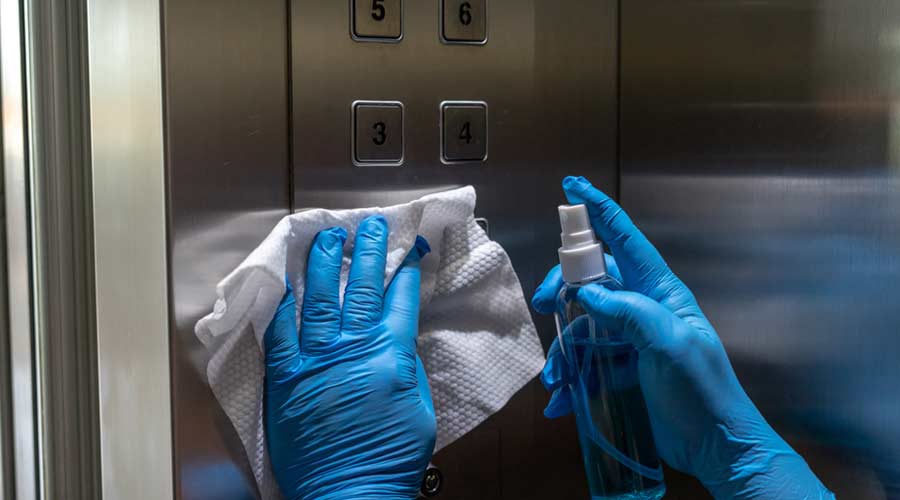
It’s now been a few years since the world came to a jolting stop due to COVID-19, and while much of life has returned to normal, some things have permanently changed.
One of the most notable shifts is the role of hand sanitizer. What was once prioritized as a quick alternative to hand washing, especially in settings where soap and water were not readily available, is now seen as a cornerstone of everyday hand hygiene. The shift is seen not only in public and private settings but across all industries from education to healthcare, underscoring the need for continued accessibility, education, and innovation.
Prior to the pandemic, hand sanitizer was viewed by most consumers and businesses alike as a convenience product. It was nice to have but not a necessity or something that would negatively impact the perception of a business if it wasn’t available. Use was limited to certain environments and situations. It was most common to find it in healthcare settings, airports, and even hidden away in a personal purse or car console.
Today, hand sanitizer is more omnipresent than ever. It has become ingrained into daily routines, something of second nature. You can find it provided in nearly all public spaces, event venues, and stores. Consumers expect and actively seek hand sanitizer stations to be ever present in order to feel safe and welcome. Failing to have accessible hand hygiene can lead to customer complaints and lost business.
Why Hand Sanitizer is Essential
The sudden and global spread of COVID-19 created an urgent need for effective and accessible hand hygiene solutions when hand washing was not available or convenient.
In a time when people feared for their health and the health of their loved ones, they wanted to take any actions possible to lower the transmission of illness.
Public health messaging during the pandemic drove home the effectiveness of hand hygiene against illness prevention. It is the first line of defense against virus transmission, whether talking about COVID-19 or other germs. This messaging remains ingrained in people’s minds and therefore their daily behaviors. Based on these learnings, people continue to prioritize hand hygiene today. It is understood that diligent hand hygiene is a defense against the spread of illness and emerging pathogens. Beyond COVID-19, influenza, norovirus, and RSV remain health threats. Hand sanitizer offers a convenient and effective way to reduce transmission.
In addition to individuals wanting to protect their health, many industries have built new programs and policies around the use of hand sanitizer to support the health of individuals. Businesses, schools, and healthcare facilities have added hand sanitizer as a core component of their wellness programs, some even requiring use in certain situations like upon entry and exit from certain rooms.
Consumer confidence and patronage in businesses with well-placed, highly visible and easily accessible hand sanitizer stations remain high. Feelings from the pandemic have not fully subsided, and stations reassure guests and employees that their health and safety are a priority.
To keep pace with evolving expectations, organizations need to do more than just offer hand sanitizer; they must embed it into a thoughtful, user-centered hygiene strategy.
Prioritize Visibility and Access:
- Continue to place hand sanitizer stations in hard to miss areas.
- Position them at all key entry points, high-traffic areas, and locations where handwashing facilities aren’t immediately available.
- Consider touchless dispensers to minimize contact and reinforce confidence.
Ensure Product Quality and Efficacy:
- While hand sanitizer is no longer being produced under temporary emergency authorizations, businesses should only stock stations with high-quality, effective formulas that contain at least 60 percent alcohol and offer broad-spectrum protection.
Look for products that also include skin conditioners to prevent dryness and irritation, encouraging consistent use.
Monitor and Measure Usage:
- Leverage smart dispensers or implement simple monitoring protocols to track sanitizer usage and identify areas where additional stations may be beneficial. Use this data to optimize placement and ensure adequate stock levels.
Promote Awareness and Education:
- Continue to remind individuals of the importance of hand hygiene with clear, engaging signage and ongoing education. Empower staff and guests with reminders about when and how to use hand sanitizer effectively, and explain its role in broader infection prevention strategies.
Embrace Sustainability:
- Post-pandemic expectations extend beyond hygiene to include environmental responsibility. Opt for refillable dispensers, bulk purchasing options, and hand sanitizer products that use eco-friendly ingredients and packaging to reduce waste and carbon footprint.
While COVID-19 may have been the catalyst for widespread adoption of hand sanitizer, its role has evolved far beyond an emergency necessity. In the post-pandemic world, hand sanitizer is now a permanent fixture in hygiene protocols, supporting public health, boosting consumer confidence, and shaping the future of infection prevention. As we continue to put distance between the pandemic and our new normal, we can expect to continue to consider hand sanitizer a critical part of an effective hand hygiene program. Investing in effective, sustainable, and accessible hand sanitizer solutions not only safeguards health but also builds confidence and trust among employees and customers.
Lauren Belskie is a major contributor and the primary editor for the Imperial Dade Learning Center, a platform designed to answer common questions, provide insights on trends and offer creative solutions to help businesses create safer, healthier and cleaner facilities. She is the Marketing Operations Manager at Imperial Dade, producing articles, videos, trainings, and other educational content targeted to the janitorial services market.
posted on 6/20/2025

 The Down and Dirty on Cleaning in Virus Season
The Down and Dirty on Cleaning in Virus Season How Surfactant Use is Expanding in Commercial Cleaning
How Surfactant Use is Expanding in Commercial Cleaning